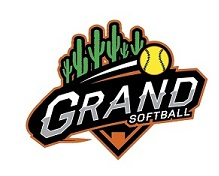Concussion Protocol 12.11.15 Updated 1/24/18 - UPDATED 3.23.2022
Concussion Management Plan
Sun City Grand Softball League
3.23.2022
Americans suffer approx. 3.8 million mild closed head injuries (concussions) per year. Of these, approx. 50% involve the elderly (over 55 years old) and approx. 50% of those head injuries to our elderly are the result of sports or physical activity.
Sports Concussions are defined as traumatic head injuries that occur from mild or severe (and direct or indirect) blows to the head while participating in a sport or physical activity.
Initial signs and symptoms of a mild concussion may include confusion, disorientation, and short-term memory loss. These signs & symptoms may disappear within minutes and are often minimized or not even reported. Untreated, continued physical activity may expose the player to the risk of serious, long-term effects, including neurological impairment, depression, cognitive deficits, and a higher risk of subsequent concussions.
Close attention must be made to players who are taking prescribed blood thinners (Warfarin, Coumadin, Xarelto, etc.) because these medications can increase bleeding after an injury - which can develop into a more serious bleeding event.
- For these reasons, the SCG Softball Safety Committee, in conjunction with the recommendations of the Surprise Fire Department, recommend the following changes to our existing "Concussion Protocol" - dated 12/11/2015 and updated on 1/24/2018.
1. In the event of an obvious or suspected head injury that occurs on or around the SCG softball field, emergency aid (9-1-1) SHALL be called immediately. (A player does not have an option in 9-1-1 being called)
2. That player SHALL immediately stop playing and SHALL be assessed before leaving the field. If the player has already left the field, he/she SHALL be assessed in the dugout. This initial assessment should focus on the presentation of headache, drowsiness, dizziness, confusion, or nausea.
- If players collide into each other and it is obvious one or both players impacted each other or the ground players SHOULD NOT be moved.
3. Any additional first aid (bandaging, ice packs, etc.) SHOULD be administered while awaiting the arrival of SFD. The player's In Case of Emergency (I.C.E.) contact person SHOULD be notified at this time if the player approves of the notification.
4. While waiting for SFD to arrive, the player SHALL be monitored for the continuation or worsening of initial signs & symptoms, i.e., headaches, drowsiness, dizziness, confusion, nausea/vomiting, etc.
5. If the SFD recommends the player seeks immediate professional treatment, the player SHALL be allowed to decide whether to: (SFD may make that decision depending on severity of injury)
- Accept emergency transport to a medical facility,
- Seek private transportation to a medical professional or facility,
- Go home (or remain at the ballpark) for continued monitoring.
The player SHALL be made aware that he/she WILL NOT be allowed to participate in any softball-related activity (including playing, practicing, scorekeeping, groundskeeping or umpiring) for the rest of the day.
6. If the SFD recommends less than emergency medical treatment, or continued at-home monitoring or treatment, the player SHALL be allowed to decide whether to:
- Remain at the ballpark, rest, and continue monitoring,
- Have someone check in with the player to ensure they are still feeling okay after returning home.
- If the SFD fails to find sufficient evidence of a concussion, the player is free to stay or go - with the understanding that they CANNOT play or practice softball for the rest of the day.
